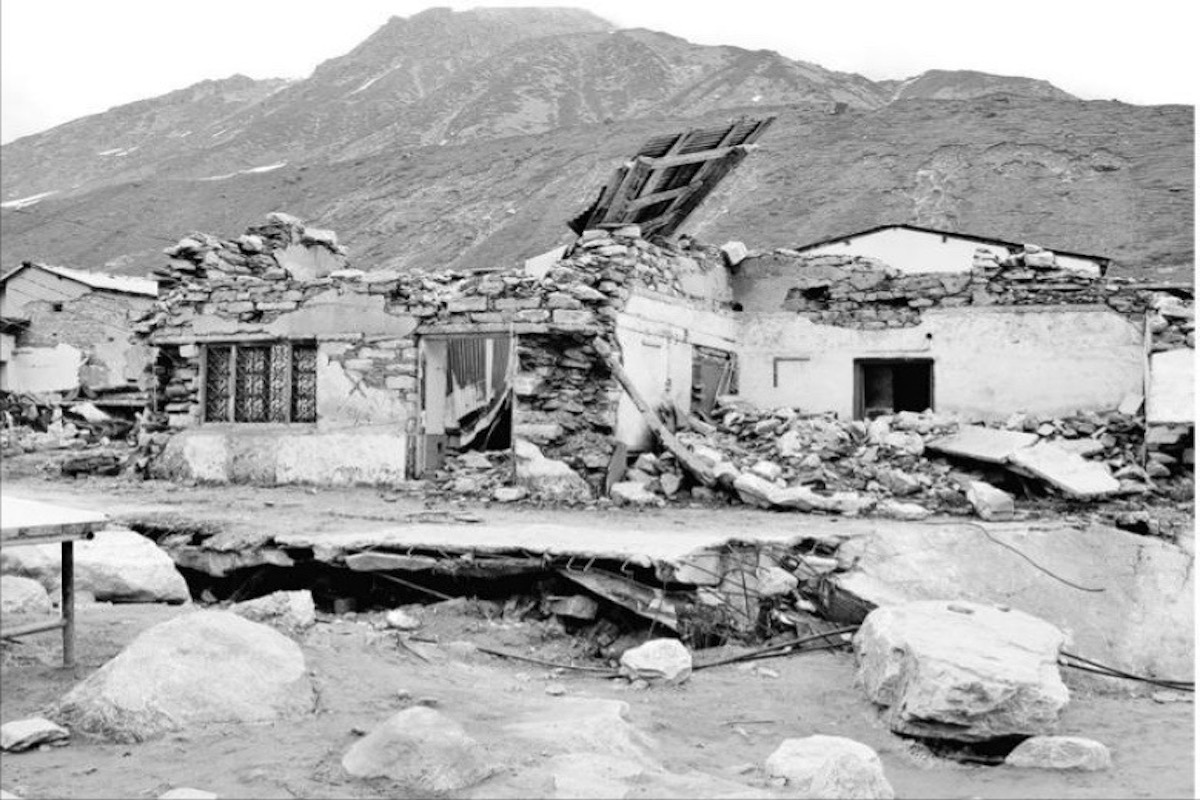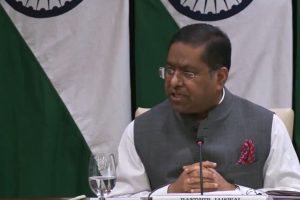The early February Uttarakhand flood in India made global headlines, bringing with it new layers of concern regarding the Himalayas. The shocking videos ensure that the incident will continue to draw attention because of climate change impacts in a region that shelters some of the world’s poorest.
The unprecedented flood reminded people of other events that had made headlines in the past: the devastating flood in Kedarnath in June 2013 which killed more than 5000 people and damaged property worth billions of rupees and the Seti flood in May 2012 in Nepal which killed 72 people. The Kedarnath flood occurred during the early monsoon period, an unusual time for floods, but it wasn’t a big surprise because cloud bursts are a common phenomenon in these parts of the Himalayas. However, the fatal floods of the Seti occurred in May, a very dry month in the middle of summer. Similarly, the Uttarakhand flood occurred in February – the middle of winter.
The initial assessments of the Uttarakhand flood deemed that it was a glacial lake outburst flood (GLOF); this was later rejected almost unanimously as glacial lakes are normally frozen during winters. Moreover, no lakes in the region were capable of producing such amounts of water basin. When the Seti River flooded in May, it took several months for experts to rule out the possibility of any GLOF and confirm, as in the case of Uttarakhand, that massive landslides at the ridge of high mountains were the main reason for the catastrophic floods.
These two examples demonstrate that deadly winter floods, though unusual, are a reality in the region. Often associated with a combination of factors, including avalanches and massive landslides which temporarily block rivers in narrow valleys in remote mountains, winter floods seem to be the result of landslide lake outburst floods. These areas are often quite remote and inaccessible. Since no information about threat levels is available, the events have caught everyone by surprise and, as a result, the damage was high.
Disasters like these only illustrate the risks we live with each day, which are probably increasing with climate change. In the case of Uttarakhand, experts haven’t ruled out the fact that landslides at such high ridges were triggered by warm weather – a result of global warming. As high mountains warm faster than average, we are likely to see more frequent dry season floods in the years ahead. The events have further exposed how vulnerable our infrastructure and the populations below truly are.
The diverse geography of the Himalayas poses equally diverse problems, from those related to the sub-tropical areas of the Tarai, which get flooded every monsoon, to the sub-alpine regions that have glacial lakes and landslide-prone, fractured high ridges as seen in the Seti and Uttarakhand floods. If we address floods in the plains, we still have landslides in the hills and if we address landslides, we still have GLOFs in the high mountains. Our institutional and technical capabilities to tackle these problems aren’t as robust as we’d like them to be.
Sadly, we haven’t been able to effectively tackle water-induced disasters in the middle mountains where landslides are not only common but recur annually. If the 2020 events serve as any indication, landslides have become more devastating. There were more than 400 landslide events last year, several of them quite deadly, killing more than 300 people and damaging infrastructure over a wide area.
One of the strategies to reduce damage from water-induced disasters is to establish an early warning system; it provides advance warnings for monsoon floods and helps save lives. During the 2017 Tarai flood, one of the deadliest in recent times, the weather forecast warned of an unusual event two days in advance; it helped get people out of harm’s way before the flood, which cost more than 60 billion Nepali rupees in property and infrastructure damage, occurred. Warning systems have also been installed for some glacial lakes. However, the dry season flood events will serve as a grim reminder of how unpredictable such events in the region are.
As we continue to chase progress, the construction of hydropower plants and roads will expand in the mountains to meet the growing demand for power and connectivity. The lack of proper design or hydrogeological study as well as explosive demolitions in the construction of hydropower projects have already been questioned by experts as well as communities; they infer that such an approach has destabilised the fragile slopes leading to unusual landslides in unusual times and places. Though it may take us a while to unearth the actual cause of the winter flood, it’s a reminder of how our development works in the mountains have increasingly placed people and property in harm’s way.
In addition, an interesting scenario seems to be unfolding in the Himalayan region: it’s getting wetter due to increased rainfall, yet droughts have prevailed. These changes have altered the local environment as evidenced by the lowering of the tree line. It’s now been established that altitudinal limits of vegetation in the Himalayas is controlled by the availability of moisture rather than temperature unlike in other mountain regions such as the Alps. The dry season is getting more arid and droughtlike, while the monsoon is getting more destructive. Perhaps due to increased drought-like conditions, we have seen a loss of springs across the mountains and increased droughts have most notably impacted subalpine regions.
The Himalayas aren’t a monolithic mountain range. Therefore, the myriad impacts of climate change – from precipitation to rise in temperature – will be nonhomogeneous as well. With landslides during the monsoon, like those of 2020 and floods during the winter like in Uttarakhand, the fate of our prosperity will undoubtedly be nebulous if not dismal. Emerging circumstances and risks require a thorough revisit of our core problems. Unfortunately, we don’t have the luxury, as we did in the past, of advocating for more forests as a solution to floods and landslides for nearly half a century, just to find out that villages located below the protected forests aren’t always safe. In 2020, villages situated right below the projected forest area were also destroyed by landslides. We need to go beyond the conventional ways of addressing these issues. It’s time for countries that share the Himalayas to collaborate and improve our understanding to ensure that future risks are reduced. Otherwise, we should get accustomed to more incidents like in Seti and Uttarakhand in our future.
The Kathmandu Post/ANN.











